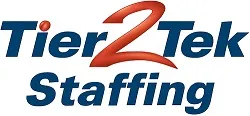Cloud Engineer Interview Questions with Answers

When hiring for the position of a Cloud Engineer, it is crucial to evaluate the technical knowledge and problem-solving abilities of candidates. These interview questions are tailored to help both hiring managers identify skilled professionals and assist job seekers in preparing for their interviews. The questions cover a range of essential topics, from basic cloud concepts to more complex scenarios involving cloud architecture and troubleshooting.
What is Cloud Computing?
Answer:
Cloud computing involves delivering various computing services over the Internet, allowing for scalable resources and potentially reduced costs.
Describe the Different Service Models in Cloud Computing.
Answer:
- IaaS: Basic compute, network, and storage on demand.
- PaaS: Online hardware and software tools for development.
- SaaS: Software applications delivered online, managed by third-party vendors.
What are the Main Types of Cloud Deployments?
Answer:
- Public cloud: Services via the public internet.
- Private cloud: Dedicated services for one organization.
- Hybrid cloud: Mix of public and private clouds.
Explain ‘Scaling’ in the Context of Cloud Computing.
Answer:
Scaling adjusts IT resources based on demand:
- Horizontal (out/in): Add/remove servers.
- Vertical (up/down): Increase/decrease server power.
What is a Virtual Private Cloud (VPC)?
Answer:
A VPC is a segmented private cloud within a public cloud, offering configurable isolation and connectivity.
How do you ensure data security in cloud computing?
Answer:
Key strategies include encryption, strict access controls, and regular security audits.
What is Disaster Recovery in Cloud Computing?
Answer:
It involves planning for and recovering from infrastructure failures, utilizing cloud resources like data backup and failover setups.
How does cloud computing save costs?
Answer:
By offering scalable resources, users pay only for what they use, reducing the need for large initial capital investments in hardware and reducing maintenance costs.
What is Multi-Tenancy?
Answer:
Multi-tenancy allows multiple customers to share the same physical infrastructures or applications but keep their data isolated from each other.
Explain the difference between cold, warm, and hot disaster recovery sites.
Answer:
- Cold site: Basic facilities without equipment until needed.
- Warm site: Equipped with installations and connections, requiring only recent backups.
- Hot site: Fully functional, mirror version of the original site, with real-time synchronization.
How do you manage data privacy in the cloud?
Answer:
Managing privacy involves compliance with legal and regulatory standards, using encryption, and implementing robust access controls to protect sensitive information.
What is Cloud Orchestration?
Answer:
Cloud orchestration involves automating the management of various cloud-based services and resources to streamline workflows and operations.
Describe Cloud Migration. What are the major challenges?
Answer:
Cloud migration is the process of moving data, applications, or other business elements from on-premises infrastructure to the cloud. Major challenges include data security, application downtime, compatibility issues, and scaling during the transfer.
What is a Content Delivery Network (CDN)?
Answer:
A CDN is a network of servers strategically distributed across different locations to deliver content such as videos, images, and web pages more efficiently to users worldwide.
What is Serverless Computing?
Answer:
Serverless computing allows developers to build and run applications without managing servers. The cloud provider automatically handles the server setup, capacity planning, and management duties.
Explain Identity and Access Management (IAM) in cloud computing.
Answer:
IAM in cloud computing involves tools and processes that control who can access what resources in the cloud. It ensures that only authorized users can access certain data or applications, enhancing security.
What are the benefits of using containerization in cloud computing?
Answer:
Containerization helps in creating lightweight, reproducible, and scalable environments. Containers package applications with all their dependencies, which improves portability and efficiency across different computing environments.
How do load balancers work in the cloud?
Answer:
Load balancers distribute incoming network traffic across multiple servers to ensure no single server becomes overloaded, improving the responsiveness and availability of applications.
What is the role of APIs in cloud services?
Answer:
APIs allow different software systems to communicate with each other, enabling cloud services to be easily integrated and managed within a variety of environments and platforms.
Describe the concept of “Elasticity” in cloud computing.
Answer:
Elasticity is the ability of a cloud system to dynamically scale resources both up and down as needed in real-time, depending on workload demands.
What are common security threats in cloud computing?
Answer:
Common threats include data breaches, data loss, account hijacking, and insecure APIs. Effective security measures are crucial to mitigate these risks.
What is the difference between fault tolerance and high availability in cloud computing?
Answer:
- Fault tolerance: The ability of a system to continue operating without interruption when one or more of its components fail.
- High availability: Ensures that a system achieves minimal downtime and maximum uptime, typically through redundancy and failover solutions.
What is “Infrastructure as Code” (IaC)? How is it used in cloud computing?
Answer:
Infrastructure as Code is a method of managing and provisioning IT infrastructure through code instead of manual processes. In cloud computing, IaC automates the setup of infrastructure, making it faster, more repeatable, and less prone to human error.
What are microservices, and how do they relate to cloud computing?
Answer:
Microservices are a design approach where applications are structured as a collection of loosely coupled services, which makes it easier to scale and maintain. In cloud computing, microservices can be independently deployed, scaled, and managed, making full use of cloud resources and capabilities.
Explain the concept of “DevOps” in the context of cloud computing.
Answer:
DevOps is a set of practices that combines software development (Dev) and IT operations (Ops) aimed at shortening the systems development life cycle while delivering features, fixes, and updates frequently in close alignment with business objectives. In cloud computing, DevOps leverages automated tools to efficiently deploy and manage applications.
How does cloud computing support big data applications?
Answer:
Cloud computing offers vast storage options and powerful computational capabilities that can scale dynamically, making it ideal for handling big data applications. Cloud environments support high-volume, velocity, and variety data analytics by providing resources that can grow with the data needs.
What are “Stateless” applications?
Answer:
Stateless applications do not save client data generated in one session for use in the next session with that client. Each transaction is performed as if it were the first time, which simplifies architecture and increases scalability in cloud environments.
Describe Blue/Green Deployment in cloud environments.
Answer:
Blue/Green Deployment is a strategy for updating applications with minimal downtime by maintaining two identical environments. The “blue” is the active environment, while “green” is the new version. Traffic gradually shifts to “green” if it operates as expected, reducing risk.
Explain how disaster recovery planning differs in cloud computing compared to traditional IT environments.
Answer:
In cloud computing, disaster recovery setups can be more flexible and cost-effective. Cloud services allow for quick provisioning of resources in diverse locations, enabling organizations to implement geographically spread data centers easily and at a lower cost than traditional physical data centers.
What is edge computing and how does it interact with cloud computing?
Answer:
Edge computing refers to processing data geographically closer to where it is created, rather than sending it across long routes to data centers or clouds. It helps in reducing latency and improving response times, and often works in conjunction with cloud computing to process data locally before moving it to the cloud for further analysis or storage.
What strategies can be employed to optimize cloud costs?
Answer:
Effective cost optimization strategies include identifying idle and underutilized resources, choosing the right type and size of resources, using reserved and spot instances, automating to scale resources dynamically, and regularly reviewing service plans and pricing.
How do you ensure compliance with data governance and legal requirements in the cloud?
Answer:
Ensuring compliance involves selecting cloud providers that meet specific regulatory standards, implementing strong data protection measures like encryption, and having clear data governance frameworks that define data handling, storage, and processing protocols.
What is data sharding, and how is it implemented in cloud databases?
Answer:
Data sharding involves dividing a larger database into smaller, more manageable pieces, called shards, that can be distributed across multiple servers. This enhances performance and speeds up response times. In cloud databases, sharding is often automated and managed by the database service to optimize scalability and management.
Describe how you would use auto-scaling in a cloud environment.
Answer:
Auto-scaling is used to automatically adjust the amount of computational resources based on the server load. In a cloud environment, auto-scaling ensures that the number of active servers increases during peak times and decreases during off-peak times, optimizing cost and efficiency.
What are the security best practices for managing cloud storage?
Answer:
Security best practices for cloud storage include:
- Encrypting data both at rest and in transit.
- Implementing strong access controls and identity verification mechanisms.
- Regularly updating security protocols and conducting vulnerability assessments.
- Using multi-factor authentication for accessing data.
Explain the role of a cloud architect versus a cloud engineer.
Answer:
A cloud architect designs the framework of cloud systems, focusing on building infrastructure and overseeing the overall cloud strategy. A cloud engineer, on the other hand, is typically more hands-on, implementing and managing the cloud services, troubleshooting solutions, and ensuring the operational aspects run smoothly.
Discuss container orchestration and its importance in cloud environments.
Answer:
Container orchestration automates the deployment, management, scaling, and networking of containers. It’s essential in cloud environments for efficiently managing large numbers of containers, ensuring they operate effectively and securely, and facilitating DevOps practices by improving CI/CD pipelines.
What is a cloud service level agreement (SLA), and what should it typically include?
Answer:
A cloud SLA is a contract between a cloud service provider and a customer that specifies the performance standards the provider is obligated to meet. It should typically include details about uptime guarantees, data protection, security commitments, and remedies for service failures.
How do you handle data sovereignty issues in the cloud?
Answer:
Data sovereignty issues in the cloud are managed by ensuring that data is stored and processed in specific jurisdictions as required by law. This involves selecting cloud providers with data centers in appropriate locations and configuring services to comply with local regulations.
Explain how APIs are used in cloud integrations.
Answer:
APIs are crucial for enabling different cloud services and applications to communicate and work together. They allow integration of third-party services, enabling automation, enhancing functionality, and allowing various systems to share data seamlessly.
What challenges might you face when moving legacy systems to the cloud?
Answer:
Challenges in migrating legacy systems to the cloud include compatibility issues with newer cloud technologies, the complexity of rearchitecting applications for a cloud-native environment, potential data loss during transfer, and increased security vulnerabilities.
Describe how you would monitor and optimize cloud application performance.
Answer:
Monitoring and optimizing cloud application performance involves:
- Utilizing cloud monitoring tools to track performance metrics like response time, traffic, and resource usage.
- Implementing performance testing to identify bottlenecks.
- Using automated scaling and load balancing to adjust resources in real time.
- Refining and updating applications based on performance data and user feedback.
Common Technologies Used by Cloud Engineers

Cloud Engineers utilize a variety of technologies to design, implement, and manage cloud solutions effectively. Here are some of the most common technologies:
- Cloud Service Platforms: Such as AWS, Azure, Google Cloud Platform, and IBM Cloud.
- Containerization Tools: Including Docker and Kubernetes for container deployment and orchestration.
- Infrastructure as Code (IaC) Tools: Such as Terraform, Ansible, and Chef for automating the provisioning of infrastructure.
- Continuous Integration/Continuous Deployment (CI/CD) Tools: Such as Jenkins, GitLab CI, and CircleCI to support agile development practices.
- Monitoring and Logging Tools: Like Prometheus, Grafana, ELK Stack (Elasticsearch, Logstash, Kibana), and Splunk for real-time monitoring and logging.
- Security Tools: Such as IAM (Identity and Access Management), key management systems, and tools for vulnerability assessment.
- Networking Technologies: Includes Virtual Private Cloud (VPC), CDN, and VPN technologies critical for managing network traffic and security.
- Database Technologies: Both SQL (like MySQL, PostgreSQL) and NoSQL (such as MongoDB, Cassandra) databases commonly used in cloud environments.
- Scripting Languages: Python, Ruby, and Bash scripts are often used for writing automation scripts.
- API Management: Tools for creating, managing, and securing APIs, such as Apigee, AWS API Gateway, or Azure API Management.
Key Expertise Areas for Cloud Engineers
Cloud Engineers require a blend of technical skills and expertise to effectively manage cloud-based infrastructure and services. Here are some of the most common expertise areas:
- Cloud Service Management: Proficiency with major cloud platforms like AWS, Azure, or Google Cloud, including their respective services and management tools.
- DevOps Practices: Experience with the principles and practices of DevOps, including continuous integration and continuous deployment (CI/CD), to enhance automation and efficiency.
- Network Security: Knowledge of security protocols, compliance issues, and data protection strategies specific to cloud computing.
- Containerization and Orchestration: Expertise in managing containers with tools like Docker and orchestrating them with Kubernetes or Docker Swarm.
- Infrastructure as Code (IaC): Ability to use scripting and automation tools such as Terraform, Ansible, or Puppet to manage infrastructure provisioning and deployment.
- Database Management: Skills in handling both traditional relational databases and modern NoSQL databases, understanding their deployment in cloud environments.
- Performance Tuning and Monitoring: Experience with tools and techniques for monitoring and optimizing the performance of cloud services and applications.
- Scripting and Automation: Proficiency in scripting languages such as Python, Bash, or PowerShell to automate cloud operations and workflows.
- Data Storage and Management: Understanding of cloud storage solutions and data management practices, including data migration and hybrid storage models.
- Problem Solving: Strong analytical skills to troubleshoot and resolve complex problems within the cloud infrastructure.
Need to Hire a Cloud Engineer?

Tier2Tek Staffing understands the critical role Cloud Engineers play in maintaining and advancing your cloud infrastructure. Let us help you find the right talent that aligns perfectly with your technical needs and company culture.
